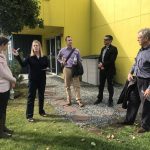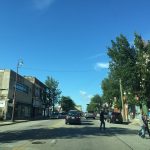West Colfax is an important and historic Denver street. It forms the spine of our historic west-side neighborhoods, then leaps the barriers of the Platte River, a maze of railroads, an interstate highway, and a checkerboard of industrial property, to connect Denver’s west-side to the increased vibrancy of central Denver. Yet West Colfax and the areas around it—and underneath its 1.25-mile viaduct segment—continue to struggle to attract new investment and serve the needs of the adjacent neighborhoods.
The Colfax Viaduct faces major connectivity, infrastructure, and redevelopment challenges. Despite being near a host of important educational (e.g., Auraria Higher Education campus), recreational (e.g., South Platte River Trail), and transit assets (e.g., Federal-Decatur light rail station & bus transfer center), the area is physically disconnected from Colfax itself (which runs along the viaduct) and dissected by numerous barriers (including I-25, the South Platte River, and several railroad tracks), suffers from poor bicycle and pedestrian connectivity, and has many large, under-utilized parking lots (several of which serve Mile High Stadium).
The West Colfax Main Street area (which stretches from the Colfax-Federal cloverleaf at the end of the viaduct for 1.25 miles west to the Lakewood border) is blessed with a dedicated local business community and strong neighborhood fabric, but lacks place-making on the street itself, suffers from a narrow and unpleasant pedestrian environment, and is disconnected from nearby recreational (e.g., Sloan’s Lake Park and the Lakewood Gulch) and transit assets (high-quality bus service along the corridor with uninviting infrastructure and three additional light rail stations in Lakewood Gulch 2.5 blocks to the south). It lacks an integrated economic development strategy that also addresses issues of connectivity, streetscape, and urban design.
Denver is currently undergoing a period of rapid growth, with the city adding an average of almost 12,000 new residents a year since 2010. It has been nearly three years since the West light rail line opened parallel to West Colfax, and the City rezoned the corridor as a formed-based Main Street district to promote pedestrian–oriented development in advance of the light rail opening, yet it has failed to attract the level of new investment and transformative development that similarly zoned corridors have in other parts of the city (such as East Colfax). While there are some potential catalyst projects under construction or under consideration, it is not clear that they will lead to the desired transformation of West Colfax, and policymakers also want to ensure that all boats are lifted by new investment.




